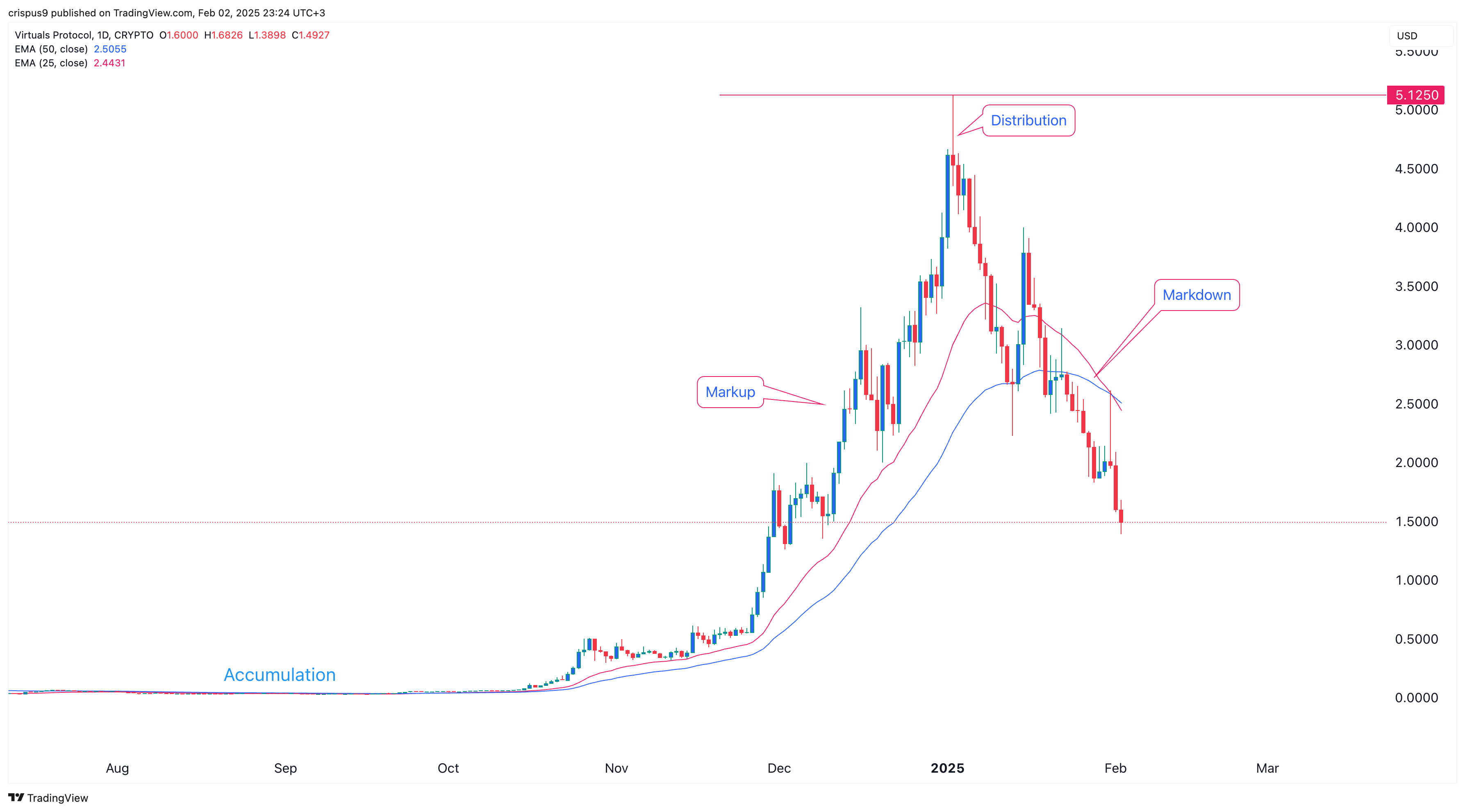The VIRTUAL price has imploded, costing investors over $1 billion. After rising to a record high of $5.1250 in January, it has crashed by over 70% to the current $1.5. It has moved to its lowest level since December 9.
Explore why the Virtuals Protocol (VIRTUAL) token crashed and what to expect.
Virtuals Protocol Initiatives Are Not Helping Its Price
The VIRTUALS price has crashed even as the network made several vital headlines. First, it expanded from Base to Solana, today’s most popular blockchain, by partnering with LayerZero. As part of its expansion, Virtuals Protocol launched a Meteora Pool to enhance trading and engagement.
Virtuals Protocol has also announced plans to buy back about 13 million tokens from its bonding fees. The goal is to purchase and incinerate those tokens, increasing their scarcity and boosting their price.
The coin’s listing on Upbit, the popular South Korean crypto exchange, and partnering with Illuvium didn’t stop its price from dropping.
The AI industry has done well recently, especially after the launch of DeepSeek, the popular Chinese AI company. While the launch led to an intense crash of companies like NVIDIA and Broadcom, it shows that AI models can be created cheaply.
Virtuals Protocol is a leading player in the sector since its AI agent generator has been used to build popular projects like GAME, aixbt, Luna, Iona, and Olyn.
VIRTUAL price Wyckoff Theory analysis

The best way to explain the VIRTUAL price crash is through the Wyckoff Theory analysis. Wyckoff is a popular theory that identifies four stages prices go through: accumulation, markup, distribution, and markdown.
The chart above shows that the VIRTUAL price moved horizontally between June and November last year. This horizontal move was part of the accumulation process. It then moved to the markup phase, pushing it from below $1 to over $5.2.
The coin has now moved to the distribution and markup phases, characterized by weak demand and higher supply. These two phases usually occur when savvy money investors exit their positions, leaving traders holding the bag.
The VIRTUAL price likely has more downsides as the 50-day and 25-day Exponential Moving Averages (EMA) cross. This means that the VIRTUAL price will probably keep falling as sellers target the psychological point of $1.0.
READ MORE: How High Can Cardano Price Realistically Jump in February?













